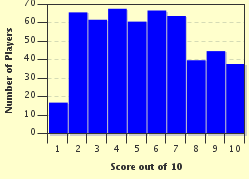Quiz Answer Key and Fun Facts
1. To begin with, why was BASIC called BASIC?
2. In most versions of BASIC, you could use a symbol as a shortcut for the PRINT command. What symbol would you use?
3. If you wanted the program to pause for a few seconds, then continue (without you having to press any key or do anything else), which of the following one-line command sequences would you use?
4. In BASIC, you had numeric variables and you had string variables. Numeric variables were numbers, plain and simply. LET X=45, for example. String variables were letters, numbers, symbols, phrases, etc. "This sentence could be contained in a string variable." What symbol after a letter signified a string variable?
5. 10 PRINT "What is the capital of Washington State?";
20 INPUT A$
Which of the following lines WOULD NOT accomplish the same as the above (asking the user the capital of Washington State and waiting for a response)?
6. 10 PRINT "What is the capital of Washington State?";
20 INPUT A$
30 IF A$="Olympia" THEN GOTO 50
40 PRINT "Sorry, you're incorrect.": GOTO 60
50 PRINT "You're Right!"
60 PRINT "What is the largest city in Washington State?";: INPUT B$
Which of the following versions of line 30 will also work?
7. Which aspect of BASIC was particularly frustrating to many computer users?
8. In BASIC, you would use the GOSUB command to send the computer to a subroutine (a section of the program designed to perform a specific routine or task). What was the command used to send the program back from the subroutine?
9. As you were working on your program, you would occasionally need to see what the program looked like. To review the program, line by line, you would type a command. What command would display all the lines of the program for your review?
10. Some, but not all versions of BASIC had a "Trace" feature which would display each line number of a program while the program was running so as to make it easier to debug. In most cases, the command used to turn on this feature was the title of a Disney movie character. What character name would turn on the trace feature?
Source: Author
eauhomme
This quiz was reviewed by FunTrivia editor
crisw before going online.
Any errors found in FunTrivia content are routinely corrected through our feedback system.

